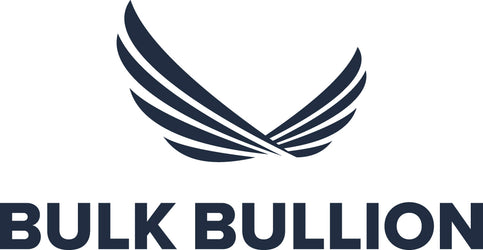
Does Our Money Have Any Real Value? | Bulk Bullion
In the modern world, currency plays a central role in our lives. It dictates our choices, influences our opportunities, and shapes our lifestyles. Yet, behind the facade of its utility and convenience, a fundamental question lurks: does our currency have any real value?
Understanding the Nature of Currency
At its core, currency serves as a medium of exchange, a unit of account, and a store of value. These functions are essential for facilitating trade and economic transactions. However, the value of currency is not inherent; it is derived from collective trust and societal agreement. Fiat currency, which is the predominant form of money today, derives its value from the confidence people place in the issuing government and its economy.
Intrinsic vs. Perceived Value
Unlike commodities like gold or silver, modern fiat currency lacks intrinsic value—it's not backed by physical assets of equivalent worth. Instead, its value is derived from the belief that others will accept it as payment. This perceived value is upheld by institutions like central banks, which manage monetary policy to maintain stability and confidence in the currency.

Factors Influencing Value
Several factors influence the perceived value of currency:
- Economic Stability: A stable economy with low inflation and unemployment fosters trust in the currency.
- Government Policy: Fiscal and monetary policies impact the value of money by affecting inflation rates and interest rates.
- Global Influence: The currency's role in international trade and its exchange rate relative to other currencies affect its value.
Challenges to Value
Despite its importance, the value of currency can be volatile and subject to fluctuations. Economic crises, political instability, and shifts in global economic dynamics can undermine confidence in a currency, leading to depreciation or even hyperinflation.
The Role of Trust and Perception
Ultimately, the value of currency hinges on trust. When trust erodes—whether due to economic mismanagement, geopolitical tensions, or other factors—people may lose faith in the currency, causing its value to decline. History is replete with examples of currencies rendered worthless due to hyperinflation or political upheaval.
Conclusion
In conclusion, while our currency may not possess inherent value like precious metals, its value is real insofar as society collectively believes in it. The stability and strength of our economic and political institutions uphold this belief. However, this belief is fragile and requires continuous maintenance. Understanding the dynamics of money's value is crucial for navigating financial decisions and comprehending the broader economic landscape.
As we move forward in an increasingly interconnected global economy, the question of currencies real value remains pertinent. It challenges us to reflect on the foundations of our financial systems and the trust we place in them—a trust that underpins the very fabric of our economic lives.
As the money supply expands at unprecedented rates and with the average lifespan of fiat currencies being a mere 27 years before they depreciate into worthlessness, foresight is crucial. Those who anticipate future developments and act accordingly will secure themselves and their families by investing in tangible assets with genuine intrinsic value.
History has shown that "runaway inflation" or "hyperinflation" catches the public unaware until it's too late, making assets like gold and silver unattainable when most needed.

Leave a comment